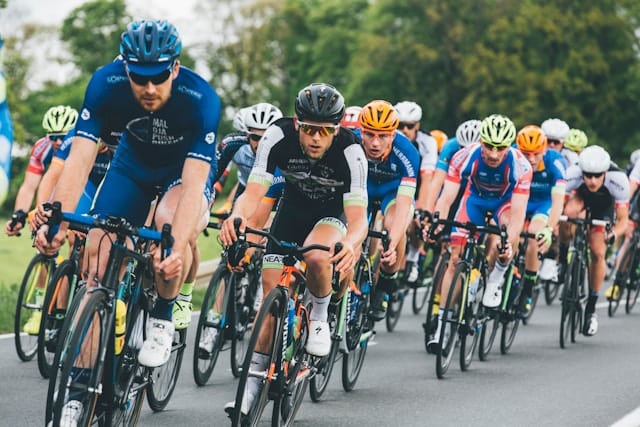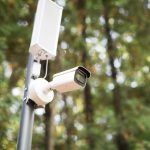Long-distance cycling is a popular activity that requires detailed planning and preparation. This is an era where technology is deeply integrated into our lives. The use of GPS technology in particular is revolutionizing long-distance cycling by providing cyclists with real-time data to optimize their routes, making every ride safer, more efficient, and more enjoyable. Discover how incorporating GPS technology into your cycling routine will enhance your route planning.
Making The Most of GPS Technology
Most cyclists are familiar with the basics of GPS technology. GPS, or Global Positioning System, is a network of satellites that transmit location data to devices on the ground. When it comes to long-distance cycling, a GPS device can be a real game-changer.
A découvrir également : How Can Isokinetic Testing Improve Rehabilitation Outcomes for ACL Injuries?
With a GPS device, you can accurately determine your position on the map, calculate the distance you’ve covered, and track your progress in real-time. Furthermore, by uploading GPS data to a computer or smartphone app, you can analyze your performance post-ride and make necessary adjustments for future rides.
Google, one of the tech giants, offers Google Maps, an excellent tool for planning and tracking your cycling routes. By selecting the cycling option on Google Maps, you can access routes that are tailored for cyclists. The app also provides information on the elevation changes along the route, helping you anticipate the level of difficulty of the ride.
Sujet a lire : How Can Pre-Practice Cognitive Exercises Improve Focus in High School Soccer Players?
Route Planning with GPS
Route planning is an essential part of long-distance cycling. It allows you to prepare for the road ahead, estimate the time it will take to reach your destination, and ensure that you will be cycling on bike-friendly roads.
With GPS technology, route planning becomes a breeze. Instead of relying on paper maps or guesswork, you can use GPS data to create an optimized route based on your speed, endurance, and the type of terrain you wish to cover.
One popular file format for exchanging GPS and map data is the GPX, or GPS Exchange Format. This format allows you to share and download routes that other cyclists have created, saving you the trouble of planning a route from scratch.
Several online platforms and apps offer a function to upload GPX files, enabling the cyclists to use the same routes. You can choose routes based on their rating, difficulty, or the sights they offer, thereby making your bike ride more enjoyable.
GPS Devices for Cycling
When choosing a GPS device for cycling, it’s essential to pick one that is robust, easy to use, and offers enough battery life for long rides. The device should also be able to withstand rough conditions, such as rain or dust.
Cycling-specific GPS devices often come with features that tailor to the needs of cyclists. For instance, they can provide data on your speed, heart rate, and power output, helping you monitor your performance throughout the ride.
Some devices also offer real-time navigation, alerting you to upcoming turns or intersections. This feature can be especially useful when you’re riding on unfamiliar roads.
How GPS Enhances your Cycling Experience
GPS technology doesn’t just help with route planning and data tracking; it can significantly enhance your entire cycling experience.
With GPS, you can venture on new tracks without fear of getting lost. The ability to explore new roads and routes is one of the joys of cycling, and GPS enables you to do this safely and confidently.
Additionally, some GPS devices and apps offer a feature to mark specific points of interest along your route. This means you can plan your stops for rest, food, or sightseeing, making your ride more enjoyable.
GPS technology also contributes to your safety on the road. In case of an emergency, the GPS can provide your exact location to rescue services. Some devices even have a built-in alarm feature that will send an alert to predefined contacts if you have an accident.
The Future of GPS and Cycling
The future of GPS technology in cycling is promising, with new features and improvements continuously being developed. We can expect GPS devices to become even more precise and reliable, providing cyclists with even more detailed and accurate data.
One exciting development is the potential integration of GPS with other technologies, such as augmented reality (AR). This could allow cyclists to view their routes and navigation data in a whole new way, further enriching the cycling experience.
While we’re still on the edge of these advancements, one thing is clear – GPS technology will continue to play an integral role in optimizing route planning for long-distance cyclists. It’s a tool that empowers you, making your rides safer, more efficient, and more enjoyable.
Choosing a GPS Device for Cycling
In the world of cycling, a GPS device is not just a luxury but a necessity, especially for long-distance cyclists. When looking for a GPS device, several factors should be taken into consideration. The device should be durable enough to withstand harsh weather conditions, user-friendly, and have a long battery life to last throughout your ride.
There are numerous bike computers available on the market that are specifically designed for cycling. These devices come packed with features that cater to cyclists’ needs. They can display data on speed, heart rate, and power output, allowing you to monitor your performance throughout the ride.
Some GPS devices even provide real-time navigation, alerting you to upcoming turns and intersections. This can prove to be extremely beneficial when you are cycling on unfamiliar roads. Major brands on the market include Garmin, Wahoo, Polar, and Lezyne, among others.
The Gaia GPS app is a popular choice among cyclists. It offers detailed topographic maps, satellite imagery, and a wealth of other features. This app allows cyclists to use GPX files to import and follow routes, and even create their own.
Another benefit of using a GPS device is the safety aspect. In case of an emergency, the GPS can provide your exact location to rescue services. Some devices even have a built-in alarm feature that will send an alert to predefined contacts if you have an accident.
Conclusion: Leveraging GPS for Better Cycling Experiences
In conclusion, GPS technology plays a crucial role in optimizing route planning for long-distance cyclists. By providing real-time data and detailed route information, GPS devices help make every ride safer, more efficient, and more enjoyable.
From simple route planning to detailed performance analysis, GPS technology is reshaping the way cyclists train and explore. With the help of platforms like Google Maps and the use of GPX files, cyclists can now explore new routes, track their progress and share their experiences with the larger cycling community.
Moreover, with the upcoming integration of GPS with other technologies like AR, the future looks promising. Cyclists can look forward to even more detailed and accurate data, enriched route visuals, and an overall enhanced cycling experience.
Whether you’re a seasoned cyclist or a beginner, a reliable GPS device can be an invaluable tool in your arsenal. It not only aids in planning your route but also ensures your safety, monitors your performance, and ultimately makes your rides more enjoyable.
With all the advancements in GPS technology, there’s never been a better time to get on your bike and explore. So gear up, plan your route, and let the GPS guide your journey. Happy cycling!











